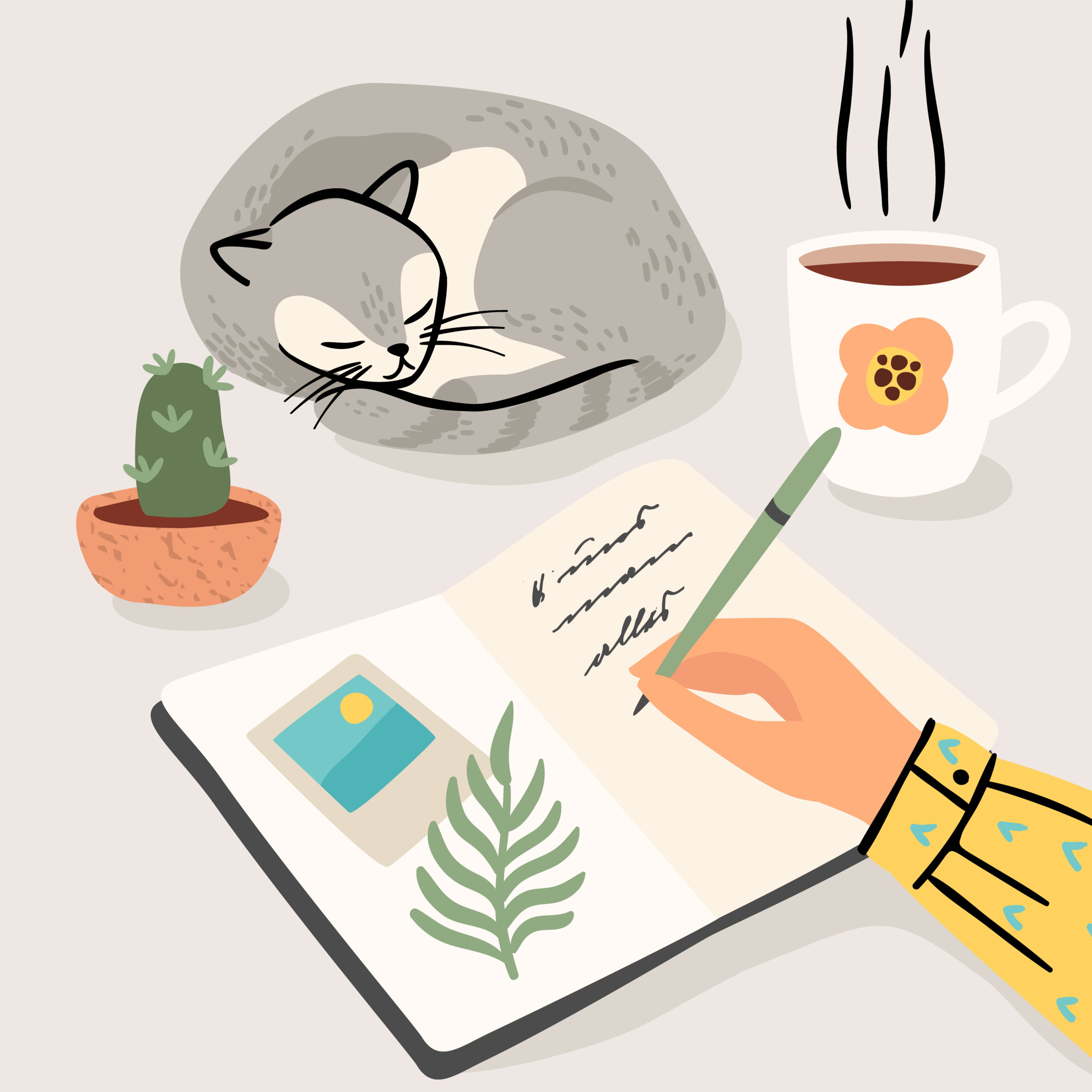With Love, Katie.
We all carry stress. Sometimes, it shows up as a tight chest, but sometimes as racing thoughts. The other day, I felt anger and had some random tears, but it also showed up as a complete shutdown. And what we do not know is that we can do some easy stress relief exercises that will really change our mood, at home or even at work, in the bathroom.
Underneath the stress are unspoken emotions—feelings that get stuck in our bodies because life is loud, fast, and demanding. Let’s slow it all down, name what we feel, and gently work with it, not against it.
Here are some common stress-related emotions and stress relief techniques.
Listen, you can make these tips everywhere, literally. Even at your work or in a bus station. So the best about this practices is that you don’t have to put a lot of time into stress relievers, just try one of these tips. It will make you feel present, whole and calm again. It is a holistical approach. But first things first…
What is Stress? What Are The Stressors?
A funny question, because I guess you never think about what stress is, you just feel it.
Stress is your body’s natural response to anything it perceives as a challenge, threat, or demand. It’s not always loud or dramatic, sometimes it’s just a constant buzz in the background: tension in your shoulders, a racing mind, a clenched jaw or feeling like you’re always on. And while a little stress is normal—even helpful—chronic, ongoing stress can wear down your body, disrupt your hormones, affect your digestion, and make joy feel out of reach.
Your body is beautifully designed to keep you safe. When you’re under stress—whether it’s from rushing, overthinking, emotional pressure, or even hidden inflammation—your body releases cortisol, the main stress hormone.
And as we know, a high cortisol level is not good. It can and will disrupt your sleep and sleep cycle, it will influence your progesterone and even estrogen levels, and will affect your gut health.
Stress vs Stressors
Now, there is a big difference between stress and stressors. While stress is the body’s natural response to any demand or threat—real or perceived, stressors are the cause of the stress. So, astressor is the event, situation, or thought that triggers the stress response.
Stressors can be classified as external or internal:
- External stressors come from your environment or circumstances, like financial pressure, relationship difficulties, a heavy workload, or traffic.
- Internal stressors stem from within, such as self-criticism, perfectionism, anxiety about the future, or unprocessed trauma.
Two people might face the same stressor, but experience very different levels of stress depending on their mindset, resilience, and support systems.
Recognizing the difference between stress and stressors is the first step to managing them. By addressing stressors (changing habits, boundaries, etc.) and supporting the stress response (with rest, nervous system care, and emotional tools), we can move toward a more balanced life.
Mind and body- we are connected, you are connected. There are a few things you can do from today to make sure you will keep your cortisol levels at their normal range, but we will get into details later.
- have a nourishing breakfast after waking up
- do not start your day with coffee, and do not drink a lot of coffee
- try matcha instead of a third coffee
- enjoy the morning lights, the fresh air and the sun, your body need the vitamin D
- try some relaxing herbs to support your body
- try journaling to ease your soul and clear your mind
But our body is more than perfect, because we do have some happy hormones too. These natural chemicals shape how you feel, connect, and move through your day. The more gently we nurture them, the more supported we feel in body, mind, and soul.
Here are four important happy hormones
-
Dopamine is the reward chemical: it gives you motivation, focus, and that little spark of satisfaction when you finish something.
Try completing small tasks, setting tiny goals to make sure you can celebrate progress every day. -
Oxytocin is the love chemical, and you might think it is only important when giving birth, but noooo. It helps you feel safe, bonded, and deeply connected. Try giving your friend or hubby a long hug, make some eye contact, try cuddling and show some kindness. A good massage will increase oxytocin, study supports teh result.
-
Serotonin is the mood stabilizer. It lifts your mood, supports sleep by regulating circadian rhythm and helps you feel grounded.
Try more sunshine, gratitude, nourishing food and nature walks, not only in sunny days. Try again that massage. It will lower your cortisol levels and increase serotonin, too, research says. -
Endorphins itself it is the natural pain relievers. These bring joy, energy, and even euphoria during movement or laughter.
Try dancing, laughing, exercising, or eating some high-quality dark chocolate.
10 Common Emotions We Carry as Stress
Stress doesn’t always look like panic and anger, trust me, it wears many faces. Here are 10 common emotional states that might be weighing on you without you even realizing:
- Anxious – on edge, jumpy, future-focused (now I get it, it is 2025, we are all stressed about future)
- Stressed – overwhelmed (once again, in this world it is easy to be overwhelmed), scattered, reactive
- Overthinking – looping thoughts, can’t shut down
- Unmotivated / Lazy – low energy, foggy, numb
- Lack of Confidence – insecure, unsure, self-critical
- Angry – reactive, frustrated, irritated
- Tense – stiff, clenched, uptight
- Tired – drained, mentally or physically
- Lonely – isolated, misunderstood, disconnected (it is very cycledepending feeling)
- Sad / Low – heavy, hopeless, flat
The first step in healing stress? You my laught, but please, name what you feel. Then give it what it needs. I really struggle with naming my problems, so I struggle with asking for help too… are you with me? So stress relief might be even simple.
What Helps Each Feeling
Absolutely! Here are 10 effective and detailed stress relief methods, blending science and gentle, everyday practices that support a calm nervous system and overall well-being:
1. Journaling
Writing down your thoughts, feelings, or worries helps declutter the mind and make sense of overwhelming emotions. It’s especially effective when used as a “brain dump” before bed or a gratitude practice in the morning.
Journaling creates a safe space to process internal stressors, gain clarity, and release tension. Even 5–10 minutes daily can shift your mindset and improve emotional regulation.
2. Movement (Walking, Stretching, Dancing)
Physical activity is one of the quickest ways to shift stress chemistry. Movement—especially rhythmic, non-competitive kinds like walking or dancing—helps the body release excess adrenaline and cortisol.
It also increases endorphins, which are natural mood boosters. Stretching and yoga activate the parasympathetic nervous system, inviting relaxation into both muscles and mind.
3. Soaking in Epsom Salt
A warm bath with Epsom salts (rich in magnesium sulfate) can relax tight muscles and calm the nervous system. Magnesium plays a vital role in regulating stress responses, and soaking is a gentle, nourishing way to replenish it. Add a few drops of calming essential oils like lavender or chamomile to enhance the stress-relief effect. A 20-minute bath before bed can significantly improve sleep and reduce tension.
4. Mindful Breathing
Breathwork signals the body that you’re safe. Try box breathing (inhale for 4, hold for 4, exhale for 4, hold for 4) or a longer exhale method (inhale for 4, exhale for 6). These practices activate the vagus nerve and parasympathetic response, calming the mind within minutes. Even 3–5 minutes of slow, conscious breathing can create space between a trigger and your reaction.
5. Eating Dark Chocolate (Mindfully!)
Dark chocolate (ideally 70% or higher) contains magnesium and flavonoids, both of which support stress relief. It also stimulates serotonin production and lowers cortisol levels. Eating it slowly, savoring the taste and texture, can also turn the experience into a mindfulness practice. Just one small square, enjoyed without distraction, can be a soothing ritual.
6. Spending Time in Nature
Time outdoors reduces stress hormones, lowers blood pressure, and improves mood. Forest walks, sitting under a tree, gardening, or simply looking at greenery can help restore your nervous system. Nature also offers a sensory break from the overstimulation of modern life, encouraging grounding and presence. Even a short walk in a park can reset your inner rhythm.
7. Listening to Music
Music has the power to regulate emotions, lower stress hormones, and bring comfort. Slow, instrumental music or familiar songs you love can instantly change your mood. Singing along, humming, or playing an instrument also stimulates the vagus nerve.
Curate a “calm playlist” for high-stress moments or transitions like winding down before sleep.
8. Drinking Black Tea
Studies show that regular black tea drinkers may recover from stress more quickly.
Black tea contains L-theanine, an amino acid known for promoting relaxation without drowsiness. Drinking tea can also become a ritual of slowing down—warming your hands, taking mindful sips, and pausing for stillness.
Try substituting your afternoon coffee with a cup of black tea for a gentler lift or even a tasty matcha, which is rich in antioxidants too.
9. Connecting with Someone You Trust
Social connection is one of the strongest buffers against stress.
Talking to a friend, hugging a loved one, or even sharing a moment with a pet releases oxytocin (the “bonding hormone”) and helps the body feel safe. Don’t underestimate the healing power of being seen and heard without judgment.
10. Creative Expression
Engaging in art, whether it’s drawing, painting, crafting, or even baking, offers a mindful break from daily stressors.
Creativity bypasses the logical brain and allows emotional processing through movement and color. You don’t need to be “good” at it—just giving yourself permission to create can bring deep relief and joy.
+1 Tip, That Really Helped My Anxiety: Digital Boundaries
Reducing screen time—especially in the morning or evening—helps regulate stress by minimizing overstimulation and dopamine overload.
A digital detox, even for an hour a day, can lower anxiety and improve focus.
5 Body-Based Ways to Reduce Stress Instantly
Your body holds stress in its tissues. Sometimes, releasing tension physically is the fastest path to feeling better mentally. Numerous studies in fields like psychoneuroimmunology, neuroscience, and somatic psychology show that techniques involving the body—such as deep breathing, yoga, vagus nerve stimulation, progressive muscle relaxation, and mindful movement —can significantly reduce stress levels by lowering cortisol, calming the nervous system, and activating the parasympathetic (rest and digest) response.
Here are 5 gentle body-based stress relief tips you can try anywhere:
Neck Rolls & Shoulder Shrugs
Gently roll your neck side to side, then shrug your shoulders up to your ears and drop them with an exhale. Repeat 5–6 times. This releases the tension most of us hold without noticing.
Jaw Relaxation
Open your mouth wide, then let it go slack. Massage the jaw muscles gently in circles. Unclenching your jaw sends a signal to your nervous system: we’re safe now.
Hand Massage
Rub your palms together to create warmth. Then gently press and knead the base of your thumbs and fingertips. This grounds you through touch.
Self-Hug
Wrap your arms around yourself and squeeze. Rock gently side to side. It might feel silly, but it soothes your nervous system like a weighted blanket.
Butterfly Tapping
Cross your arms over your chest so each hand rests on the opposite shoulder. Tap slowly back and forth. It helps bring your brain and body back into balance, especially after overwhelm.
Final Thought
You don’t have to be calm all the time and you don’t even have to be productive or positive or graceful all day long. You just have to meet yourself where you are, and offer care instead of pressure.
First, make sure you have a very good breakfast, so this will support you through your day, no matter what’s next.
Let stress be a message—not a punishment and let healing be slow, body-led, and honest. One thing for sure: make sure you see the stress and let it go.







